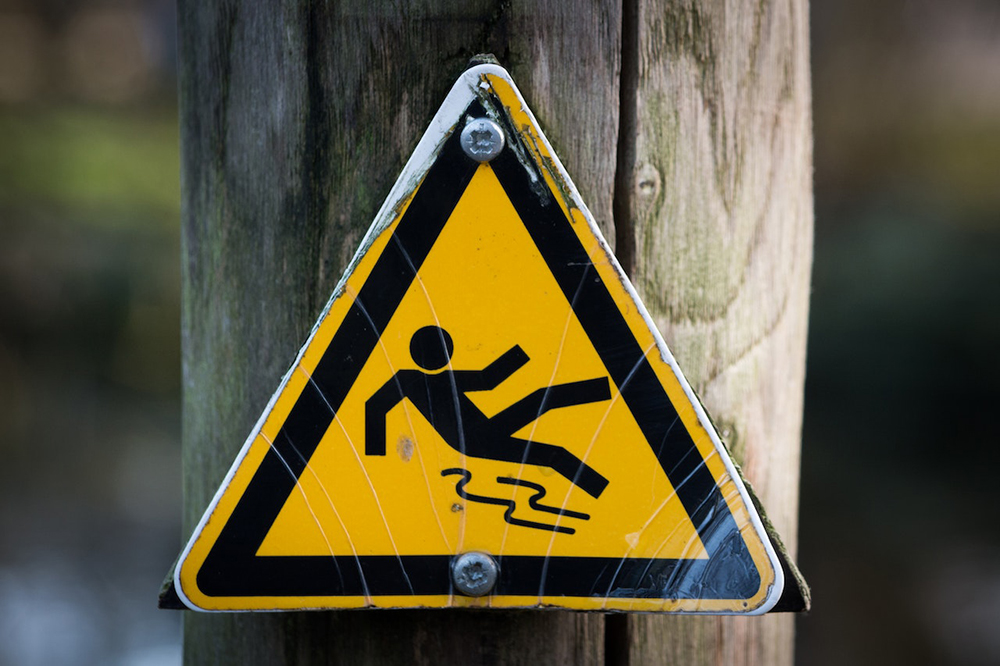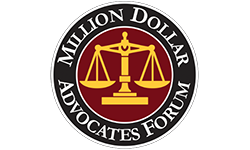
According to the Centers for Disease Control and Prevention (CDC), there are at least 800,000 patients who end up hospitalized after suffering a fall injury. It’s likely that the number of individuals who have slip and fall accidents yet don’t seek any medical care afterward, or do but don’t need to be hospitalized, is even more significant. It’s unclear how many of these falls come after situations in which someone slips.
As prevalent as slips and falls sound like they are, you may be wondering a lot about these incidents, including why they happen, places where they most often occur, and who is most apt to have such an accident. And, if you’ve suffered an injury as a result of having a slip and fall, then you may be curious as to whether you can hold anyone liable for the harm they caused you. We’ll cover these questions (and more) below.
What Qualifies as a Slip and Fall Accident?
The concept of a slip and fall describes a situation in which someone loses their footing and consequently falls to the ground.
What Are the Most Common Reasons Slip and Fall Accidents Occur?
As you may suspect, there are a wide range of reasons someone may suffer a slip and fall, some of which may be attributable to the victim’s negligence and some that may be to blame on the negligence of others. Those include:
- Because ice or snow is allowed to accumulate on a surface without anyone taking time to melt it, shovel it, or otherwise eliminate it.
- Liquids, fluids, and other easily spreadable substances, including blood, food products, oils, water, soaps, detergents, and wax, go unnoticed or are ineffectively cleaned up.
- Debris, whether it takes the form of papers, garbage, boxes, or electrical cords, can lead someone to go sliding, trip, and tumble in a fall.
- Moisture-rich foods, like the skin or flesh of vegetables and fruits, like banana peels, can easily convert into something akin to skis, affecting your ability to remain upright and safe.
- Mobility issues, whether due to poor muscle strength, balancing issues, or other factors that affect a person’s ability to safely navigate an area.
- Poor lighting makes it challenging to navigate around an area to notice potential hazards.
- Leaky or busted pipes.
- Flooring issues, whether they involve wet tile floors or an entryway mat that moves with the flow of traffic instead of remaining in place.
As for flooring, data by the Consumer Product Safety Commission and cited by the National Floor Safety Institute (NFSI) suggests that at least 2 million individuals suffer falls attributable to floor-related concerns annually.
The list above provides only a few examples of the more common reasons slips and falls occur, some of which you can likely see where they’re preventable and others are not.
Where Are Slips and Falls Most Apt To Occur?
Just like there’s no single reason why slips and falls occur, these incidents don’t just happen in a single location. Some areas where injury events like these transpire include:
- At entertainment venues: This may include sports arenas, stadiums, convention centers, concert halls, arcades, movie theaters, nightclubs, bars, or amusement parks.
- Nursing homes: Slips and falls may occur in the foyer at the entrance of this type of assisted living facility, in a resident’s room, a hallway, or a dining room.
- Grocery stores: Someone is most likely to suffer a slip and fall in an area where their chances of coming in contact with some of the potential hazards described above are high, like the produce section, near fountain drink machines, and on aisles where laundry detergents and hand soaps, glass or plastic containers may break and spill, or malfunctioning freezers may defrost.
- Recreational facilities: If you ever wonder why you see crews quickly running out on a basketball court when watching it on TV, it’s because the mixture of sweat and body oils can create a slipping hazard. The same goes for wet tiles surrounding a swimming pool or in a public restroom, such as at your gym.
- Office buildings and other workplaces: Slip and fall dangers can lurk in many different places in commercial facilities like these, including at entrances or lobbies, hallways, cafeterias or around concession areas, in laboratories, on exterior sidewalks, in stairwells, in mail rooms, and on loading docks.
- Building exteriors: The likelihood of someone suffering a slip and fall when attempting to navigate stairs, a sidewalk, a parking lot, a driveway, and other poorly maintained areas is high.
Even though we’ve only begun to scratch the surface of locations where slips and falls occur in this list, you can likely tell that they can happen virtually anywhere.
Injuries That May Result When Slips and Falls Occur
According to the data compiled by the CDC in the earlier-mentioned report, at least one-third of the individuals who suffer falls who are hospitalized annually in the U.S. fall into the category that the federal agency refers to as “older people.” Hip fractures are the most common diagnosis they receive. All but 5% of those incidents occur during sideway falls.
Broken hips aside, potentially life-threatening injuries that individuals involved in slip and fall accidents suffer include:
Lacerations (Cuts)
These may be caused by the body striking a stationary object. The danger with this type of injury is the chance of a bleed out and also exposure to harmful bacteria if it makes it into the wound.
Protrusion Injuries
The force of a slip and fall can cause someone to suffer a splintering type of bone fracture that protrudes the skin, rendering the affected body part non-functional (without future surgical intervention and rehabilitation). The risk of infection, which could warrant a life-saving amputation, is particularly high in cases like these.
Neck and Back Issues
Anything from a herniated disc to a pinched nerve, a broken neck or back, or a severed spinal cord injury may stem from someone having a slip and fall.
Head and Traumatic Brain Injuries
Slips and falls generally spontaneously occur, and thus an individual doesn’t have time to brace themself before they come tumbling to the ground. This leaves victims’ heads vulnerable to colliding with the hard ground beneath them or striking an object, like shelving, countertops, or bathroom fixtures nearby on their way down.
At the very least, this may cause a concussion and its ill effects. A severe traumatic brain injury is also a probability depending on whether there’s an impaling injury, how significant the force of the impact is, and other factors.
Populations That Suffer Slips and Falls the Most
While statistics surrounding slips and falls specifically are hard to come by, there is a fair amount of data readily accessible regarding falling in general that provides some insight into populations most vulnerable to suffer these types of accidents over others. These statistics show that:
Gender Matters as Far as Slips and Falls Are Concerned
Women are more apt than men to have a workplace slip and fall accident, per a Bureau of Labor Statistics data point cited by the NFSI.
A Person’s Job Role Affects Their Slip and Fall Risk
As for employees, U.S. Bureau of Labor Statistics data cited by NFSI shows that at least 22% of slips and falls require workers to miss in excess of 31 days from work. Additionally, at least 40% of on-the-job falls occur at elevations. Falls are more prevalent among workers in some fields, such as manufacturing and service industry roles, although they’re often fatal when miners, construction workers, and maintenance workers suffer them.
Age Contributes to an Increased Risk of Suffering Slips and Falls
A person’s risk of having a fall increases every decade as they age, according to the NFSI.
Older people have a significantly higher risk of getting hurt or dying if they suffer falls than others. The CDC resource we’ve cited throughout this post captures how fall-related deaths among senior citizens increased by 30% between 2007 and 2016. Their fall death rate is expected to climb to seven per hour by 2030.
It should also be noted that, in terms of seniors, the NFSI statistics cited above capture how falls are the second most common cause of injury-related death for people aged 65–84. Those often prove fatal. Fall injuries among those persons 85 and older are the main cause of injury-related deaths.
Kids’ Risks for Slipping and Falling
Data compiled by Stanford Children’s Health shows that at least 2.2 million kids 14 or younger receive emergency room treatment for fall injuries annually. Data they’ve compiled suggests that at least 100 children succumb to fall-related injuries each year.
While it’s unclear how many of these injuries are attributable to slips and falls, it’s possible they might be. These may happen at swimming pools, ice rinks, playground equipment, and countless other places like the ones described above.
Seeking Help After a Slip and Fall Accident
Slips and falls have a way of turning a person’s life upside down. While potential setbacks are often temporary for most, they’re life-altering for others.
Kentucky premises liability law allows slip and fall victims to recover compensation when someone else’s negligence caused them to suffer harm. If you suspect that your injury incident stems from another person failing to exercise the duty of care they owed you to maintain their property in a reasonably safe condition, then let’s talk.
Reach out to our Lexington, KY law firm, Peterson Law Office, to discuss your slip and fall personal injury matter and your rights within it. Your initial consultation with a lawyer from our office is completely free.





